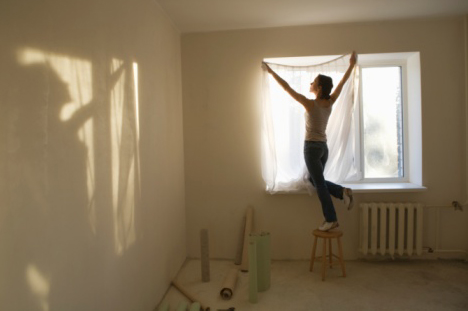 Some of the most minor changes around your home can benefit our planet, increase your own wellbeing, and bring happiness to your wallet. With green products and techniques no longer part of a boutique industry, the chance to plant your own footprint into making a difference has never been easier.
Some of the most minor changes around your home can benefit our planet, increase your own wellbeing, and bring happiness to your wallet. With green products and techniques no longer part of a boutique industry, the chance to plant your own footprint into making a difference has never been easier.
Here are few ideas to improve your home’s efficiency so you can live in an environmentally friendly home.
Window Treatments
When greening your home the number one consideration is windows. Because much of your home’s energy loss is through them, ensuring you have coated glass or energy efficient curtains or blinds is important.
Most window coverings offer some sort of insulation, but some perform more efficiently than others—lowering heating and cooling costs without compromising your décor and design. For those that want the best of both worlds, curtains and blinds, such as readymade roman blinds, make for a fantastic choice giving the luxurious appearance of curtains combined with the mechanisms of blinds.
The amount of light that enters the room can easily be controlled through the type of fabric providing an energy efficient solution. To keep your home cooler in summer it’s a good idea to make sure your east and west windows are shaded.
The frame of your windows can also play a big part in green living as the commonly used material UPVC (unplasticized poly vinyl chloride) can release toxic compounds. Wood-framed windows are a much greener alternative – they are more insulated, easier to repair and last longer.
Green Up Your Appliances
If your appliances are more than 10 years old, it’s a good idea to start working towards replacing them with energy efficient models that display the “Energy Star” logo. Every device normally has a label that shows how much power it consumes, so the old fridge out the back holding just a carton of beer could be costing you $200 a year.
Once you have studied your power bill, cross checked with these labels, you will be able to figure out how much each appliance costs to run and whether replacing it would be a cheaper option. For appliances that don’t require replacing, make sure you do a regular check for leaky parts and get them repaired as soon as possible. This will help significantly on your water saving too.
Energy Efficiency Lighting
LED are the most durable and eco-friendly of lighting options. Not only will they save you on the power bills, but they are low maintenance and super pleasant on the environment.
As opposed to standard halogen lights, LEDs consumer a fraction of the energy, providing more light and less heat and energy. Because of the significant drop in temperature from these lights, it lowers the use of air conditioning making it very cost effective.
Reduce Your Water Use
To reduce your outdoor water use, optimize your lawn watering schedule and adjust your sprinklers to minimize waste.
Running your washing machine and dishwasher only when they are full will also help in reducing water wastage.
Clean Air Conditioning
When you’re doing your regular spring clean, not many people will think to put the air conditioner on the list of things to do – but you should. Cleaning out the filters of your air conditioning or replacing them regularly will ensure the airflow is doing its job properly.
Keep Your Garden Green
Creating compost is a great way to keep your garden even greener with its multiple eco-friendly benefits. Scraps such as eggshells, fruit and vegetable peels, tea bags and stale bread are the perfect food for your compost pile and can improve the health of your soil whilst giving back to the environment and controlling household waste.
Going green isn’t a tough task to achieve and even just applying one or two of the above points can make a world of difference. What are you going to do to leave your imprint on the environment?
No comments:
Post a Comment